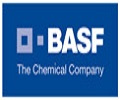-
Email Us
- Top Reports
Global Biomimetic Plastic Materials Market Investment Landscape 2025-2032
Price
Single User License 3300
Multi User License 6000
Corporate License 7200
The Biomimetic Plastic Materials market is experiencing remarkable growth as industries increasingly seek sustainable and innovative solutions for material design and production. Biomimetic plastics are inspired by the structures and functions found in nature, leading to the development of materials that are not only high-performing but also environmentally friendly. These materials find extensive applications in various sectors, including packaging, automotive, healthcare, and consumer goods, where the demand for lightweight, durable, and recyclable materials is on the rise. Recent insights from a report by STATS N DATA highlight the market's current size and historical growth trends, indicating a robust expansion fueled by advancements in material science and an increasing emphasis on sustainability.
The market, valued at several billion dollars, has shown consistent growth driven by a shift towards eco-friendly materials in response to regulatory pressures and consumer preferences. Forecasts suggest that the Biomimetic Plastic Materials market will continue to grow significantly in the coming years, propelled by technological innovations that enhance the performance and functionality of these materials. Key market drivers include the rising awareness about environmental issues, the push towards circular economy practices, and the need for reducing carbon footprints across various industries. However, challenges such as high production costs and limited awareness among end-users may restrain growth to some extent.
Opportunities abound in the Biomimetic Plastic Materials market, particularly as technological advancements pave the way for new applications and improved material properties. Innovations in bio-based plastics and composites are opening up avenues for manufacturers to create products that not only meet performance standards but also align with sustainable practices. With trends leaning towards greater customization and performance optimization, companies are investing in R&D to explore the full potential of biomimetic designs. As the market evolves, stakeholders are well-positioned to capitalize on these opportunities, fostering a future where biomimetic solutions transform traditional material usage across industries, driving both profitability and sustainability forward.
In today's fast-paced global business environment, staying up-to-date with the latest trends in the BIOMIMETIC PLASTIC MATERIALS MARKETis crucial for success. Our comprehensive market research report by STATS N DATA serves as a vital resource for investors and companies, providing in-depth insights into the Global Biomimetic Plastic Materials Industry. This report goes beyond basic data analysis, offering detailed revenue forecasts, extensive future projections, and a thorough review of trends from 2024 to 2031. For decision-makers navigating this dynamic market, our report is an essential tool that helps in developing strategies aligned with the market's anticipated changes.

Market Overview and Trends
The report provides a detailed analysis of the current size and scope of the Biomimetic Plastic Materials Market, using extensive historical data to uncover key insights and track the market's evolution over time. By examining past trends and patterns, stakeholders gain valuable insights into the development of the Biomimetic Plastic Materials Market, which serves as a strong foundation for predicting its future direction. This comprehensive review helps identify opportunities for growth and innovation, making it easier for stakeholders to plan their next moves effectively.
Future Outlook and Emerging Trends
Additionally, the report offers insights into the future of the Biomimetic Plastic Materials Market, with expert forecasts and detailed analyses of emerging trends. These projections provide stakeholders with a clear understanding of the market's expected path, enabling them to adapt to changes and seize new opportunities. The report identifies key growth drivers, such as technological advancements and increasing demand across various sectors, while also considering challenges like regulatory issues and economic uncertainties. This strategic overview empowers stakeholders to make informed decisions and create effective strategies to thrive in a rapidly evolving market landscape.
Market Segmentation
The Biomimetic Plastic Materials Market is divided into different categories, including product type, application/end-user, and geography. The segmentation is outlined as follows:
Type
- Biodegradable Plastic, Self-healing Plastic, Others
Application
- Research Institutions, Transportation, Consumer Electronics, Others
Each segment is thoroughly analyzed to offer a clear understanding of its role in the overall market dynamics. This section evaluates the size and growth rate of each segment, helping stakeholders identify areas with the greatest potential for rapid growth as well as those showing steady performance. This analysis is essential for pinpointing key segments that drive the market forward and offer substantial opportunities for future growth.
The report also includes an attractiveness analysis of the Biomimetic Plastic Materials Market, assessing the appeal of each segment based on factors like market potential, competition intensity, and growth prospects. This evaluation provides a comprehensive view of which segments are most promising for investments and strategic initiatives, allowing stakeholders to allocate resources more effectively and maximize their return on investment.
Geographic Analysis
The report also explores the geographical segmentation of the Biomimetic Plastic Materials Market, offering a detailed analysis of key regions, including North America, Europe, Asia-Pacific, Latin America, and the Middle East & Africa. Each region is evaluated based on market size, growth rate, and key trends, providing stakeholders with insights into regional dynamics and expansion opportunities. This geographic analysis is crucial for understanding the global landscape of the Biomimetic Plastic Materials Market and for customizing strategies to fit specific regional markets.
Competitive Landscape
Companies profiled in this report are
- Parx Plastics
- The University of Tokyo
- The University of Southern Mississippi
- University of Illinois
- ESPCI Paris
- Israel Institute of Technology
- Karlsruher Institut fur Technologie
- Harvard University
- University of Science and Technology of China
The competitive landscape of the Biomimetic Plastic Materials Market is marked by fierce competition, with leading players continuously working to maintain and grow their market share. Our report provides a comprehensive overview of this competitive environment, profiling major players and examining their market positions. This section includes a detailed SWOT analysis for each key competitor, offering insights into their strengths, weaknesses, opportunities, and threats. Understanding these dynamics is critical for stakeholders aiming to identify areas for improvement and develop strategies to gain a competitive edge.
The report also examines the strategic moves made by these key players, such as mergers, acquisitions, partnerships, and product innovations. Staying informed about these developments helps stakeholders anticipate shifts in the competitive landscape and adjust their strategies accordingly.
Furthermore, the report includes a benchmarking analysis of key products and services within the Biomimetic Plastic Materials Market. This comparison highlights the performance and market positioning of various offerings, helping stakeholders identify industry best practices and areas for improvement. This analysis is essential for stakeholders looking to enhance their competitive positioning and maintain a strong presence in the market.
Recent Developments
The Global Biomimetic Plastic Materials Market has seen significant changes in recent years, with mergers, acquisitions, partnerships, and new product launches shaping the industry. Our report provides an in-depth analysis of these recent developments, giving stakeholders insights into how these actions have influenced the competitive landscape and overall market dynamics.
Beyond mergers and acquisitions, the report covers strategic alliances and partnerships between key players in the Biomimetic Plastic Materials Market. These collaborations are crucial for driving innovation and expanding market reach, and understanding these dynamics can help stakeholders identify potential opportunities for partnership and growth.
Additionally, the report includes a detailed analysis of new product launches and innovations in the Biomimetic Plastic Materials Market. This section highlights the latest technological advancements and product developments, offering stakeholders insights into emerging trends and opportunities. Keeping up with these developments is essential for stakeholders looking to stay competitive in the market.
Technological Advancements and Innovations
Technological advancements are a major force driving the evolution of the Global Biomimetic Plastic Materials Market. Our report highlights the most important technological developments influencing the industry, showing how these innovations are driving change and shaping the market landscape. This section provides a detailed overview of the latest technological trends, including advancements in product design, manufacturing processes, and digital technologies.
The report also examines the impact of these technological advancements on the Biomimetic Plastic Materials Market, exploring how they are altering industry dynamics and creating new opportunities for growth. This analysis is vital for stakeholders looking to leverage technology to remain competitive and meet the changing needs of the market.
In addition to current technological trends, the report offers insights into future innovations that could disrupt the market. These emerging technologies have the potential to create new growth opportunities and challenges, and staying informed about these developments is crucial for stakeholders wanting to stay ahead of the competition.
Industry Dynamics and Structure
The report provides a detailed examination of the overall structure and dynamics of the Biomimetic Plastic Materials Market. This analysis helps stakeholders understand how the industry operates, highlighting the key components and their interactions. Knowing these elements is essential for identifying opportunities for collaboration and innovation, which are key to driving market growth and development.
The report also explores the main factors influencing industry dynamics, including economic, regulatory, and technological aspects. By understanding these dynamics, stakeholders can develop strategies that align with the industry's overall structure and take advantage of emerging opportunities.
Additionally, the report offers insights into the changing nature of the Biomimetic Plastic Materials Market?s value chain. This analysis follows the process from suppliers to end-users, showing where value is added at each stage. By optimizing the value chain, stakeholders can enhance operational efficiency and gain a competitive advantage.
Competitive Analysis Using Porter's Five Forces
Our Biomimetic Plastic Materials Market report uses Porter's Five Forces Analysis to provide a strategic framework for understanding the competitive landscape. This analysis evaluates the bargaining power of buyers and suppliers, the threat of new entrants and substitute products, and the intensity of competitive rivalry. These insights are crucial for stakeholders looking to understand the factors that affect the industry's profitability and competitiveness.
The report also explores how these forces might change over time, giving stakeholders insights into future competitive dynamics. By understanding these forces, stakeholders can develop strategies that improve their market position and reduce potential risks.
Value Chain Analysis
The report includes a comprehensive value chain analysis, providing stakeholders with a detailed understanding of the process from suppliers to end-users. This analysis highlights each phase of the value chain, showing where value is added and identifying potential areas for efficiency improvements or strategic adjustments. By optimizing the value chain, stakeholders can enhance their operational efficiency and secure a competitive edge.
In addition to mapping the value chain, the report also explores the key drivers of value creation within the Biomimetic Plastic Materials Market. Understanding these drivers is crucial for stakeholders aiming to maximize their return on investment and drive business growth.
Customer Preferences and Trends
Knowing customer preferences and trends is key to success in the Biomimetic Plastic Materials Market. The report identifies major consumer expectations and trends, offering insights into what customers value most in products and services. This section looks at how these preferences are changing, providing stakeholders with information on how they can adjust their offerings to meet evolving consumer demands.
The report also analyzes the impact of these trends on the market, examining how shifts in consumer preferences are influencing the industry. By aligning their strategies with customer needs, stakeholders can enhance customer satisfaction, build brand loyalty, and drive business growth.
Regulatory Environment
The regulatory environment plays a crucial role in the Biomimetic Plastic Materials Market, and our report provides an in-depth overview of the key regulations and standards that impact the industry. This section examines the legal and regulatory framework governing the market, giving stakeholders a clear understanding of the rules and guidelines they must follow.
The report also looks at the implications of recent regulatory changes, assessing how these shifts are shaping the market and affecting stakeholders. Understanding the regulatory landscape is essential for stakeholders looking to stay compliant and avoid potential legal issues.
In addition to current regulations, the report provides insights into possible future regulatory changes. Staying informed about these changes is important for stakeholders wanting to anticipate challenges and adjust their strategies accordingly.
Market Entry Strategy
Entering the Biomimetic Plastic Materials Market presents several challenges, such as high barriers to entry and tough competition. This report identifies the main obstacles new entrants must overcome to successfully enter the market, including significant capital requirements, strict regulatory standards, and established competitors.
The report also highlights key success factors for new entrants in the Biomimetic Plastic Materials Market, covering essential aspects like innovation, effective marketing strategies, strategic partnerships, and a strong value proposition. By focusing on these key elements, new entrants can better navigate the complexities of the market and significantly enhance their chances of success.
Additionally, the report offers strategic recommendations for market entry, providing practical advice on market positioning, customer acquisition strategies, and differentiation tactics. These strategies are designed to help new entrants build a solid market presence and gain a competitive edge in the Biomimetic Plastic Materials Market.
Economic Indicators and Risk Analysis
This report explores the impact of broader economic factors on the Biomimetic Plastic Materials Market, such as GDP growth, inflation rates, and employment trends. This analysis offers stakeholders a comprehensive understanding of the wider economic environment and its influence on the market, supporting better decision-making.
The report also examines the risks and uncertainties within the Biomimetic Plastic Materials Market, highlighting potential challenges to market stability and growth. These risks include economic volatility, regulatory changes, and intense market competition. By understanding these risks, stakeholders can develop strategies to mitigate them and strengthen market resilience.
Moreover, the report provides specific strategies for mitigating these risks. The section on impact assessment and mitigation offers actionable recommendations that help Biomimetic Plastic Materials Market participants manage risks effectively and maintain stability. By proactively addressing these risks, stakeholders can safeguard their interests and support sustainable growth.
Investment Analysis
This research evaluates key suppliers and distributors in the Biomimetic Plastic Materials Market, highlighting the main entities involved in providing and distributing products. The report offers insights into their capabilities, reliability, and strategic importance within the supply chain. Understanding these dynamics helps stakeholders optimize their operations and strengthen their market positions.
Additionally, the report identifies prime investment opportunities and offers strategic recommendations. It provides insights into areas with significant potential for high returns, guiding investors in making informed decisions about resource allocation for optimal impact. Strategic investments in these high-potential areas can significantly increase profitability and drive market growth.
The report also includes a comprehensive analysis of return on investment (ROI) and financial projections. This analysis is crucial for assessing the expected profitability of investments and developing informed financial strategies. Understanding these financial forecasts is essential for evaluating potential returns and the associated risks of various investment avenues. By leveraging data-driven investment decisions, stakeholders can maximize their returns and achieve their financial goals.
Furthermore, the report includes feasibility studies for potential new projects or ventures. These studies assess the viability of new endeavors by analyzing market demand, cost estimates, and potential revenue. Such evaluations ensure that investors can make well-informed decisions about pursuing new opportunities. Engaging in feasible projects allows stakeholders to expand their market presence and drive business growth.
Technological and Innovation Insights
The Biomimetic Plastic Materials Market report explores emerging technologies and their potential to significantly impact the market, highlighting how these advancements are setting the stage for the industry's future. This section focuses on innovations that could disrupt the market landscape, creating new opportunities for growth and innovation.
Additionally, the report provides a detailed analysis of the innovation landscape and research and development (R&D) activities within the Biomimetic Plastic Materials Market. It examines ongoing R&D efforts and the overall state of innovation, offering a comprehensive view of how companies are driving progress and maintaining competitiveness. This analysis is vital for understanding the role of innovation in market growth and identifying areas for strategic investment.
Furthermore, the report explores the potential of disruptive technologies within the Biomimetic Plastic Materials Market. These technologies have the capacity to reshape the industry, creating new opportunities and challenges. By staying informed about these emerging technologies, stakeholders can proactively adjust their strategies and leverage innovation to secure a competitive advantage.
Geographic Analysis
The report provides a thorough geographic analysis of the Biomimetic Plastic Materials Market, offering insights into regional trends and opportunities. This section covers key regions, including North America, Europe, Asia-Pacific, Latin America, and the Middle East & Africa. Understanding these regional dynamics is essential for identifying growth opportunities and customizing strategies to fit specific markets.
Regional Insights
The analysis also highlights regional trends and developments, emphasizing the most significant market drivers and challenges in each area. By understanding these regional dynamics, stakeholders can make informed decisions about market entry, expansion, and resource allocation.
Market Size and Growth Rate by Region
The report examines the market size and growth rate across different regions, providing a clear view of which areas are experiencing the most rapid growth. This information is crucial for identifying key markets and planning strategic initiatives.
Emerging Markets and Opportunities
The report identifies emerging markets with high growth potential, offering strategic recommendations for capitalizing on these opportunities. Understanding these emerging markets is vital for stakeholders looking to expand their presence and tap into new growth areas.
FAQ
What is the Global Biomimetic Plastic Materials Market size and what growth rate can be expected during the forecast period?
What are the key factors driving the growth of the Biomimetic Plastic Materials Market?
What challenges and risks does the Biomimetic Plastic Materials Market currently face?
Who are the major players in the Biomimetic Plastic Materials Market?
What are the current trends influencing the shares of the Biomimetic Plastic Materials Market?
What insights can be gleaned from applying Porter's Five Forces model to the Biomimetic Plastic Materials Market?
What global expansion opportunities are available in the Biomimetic Plastic Materials Market?
Our comprehensive market research report on the Global Biomimetic Plastic Materials Market is an invaluable resource for investors, executives, and companies looking to deepen their understanding of the industry. With detailed analyses, actionable insights, and strategic recommendations, this report equips stakeholders with the knowledge they need to make informed decisions and capitalize on the opportunities within the Biomimetic Plastic Materials Market. We encourage you to leverage these insights to enhance your strategic planning and secure a competitive edge in this dynamic market.
Frequently Asked Questions
1 What global expansion opportunities are available in the Biomimetic Plastic Materials Market?
The Biomimetic Plastic Materials report identifies several regions, including North America, Europe, Asia-Pacific, and emerging markets, that present significant growth opportunities. It provides strategic recommendations for companies looking to expand their market presence globally.
2 Who are the major players in the Biomimetic Plastic Materials Market?
The report profiles the leading players in the Biomimetic Plastic Materials Market like Parx Plastics, The University of Tokyo, The University of Southern Mississippi, University of Illinois, ESPCI Paris, Israel Institute of Technology, Karlsruher Institut fur Technologie, Harvard University, University of Science and Technology of China providing a comprehensive SWOT analysis for each. It examines their market shares, strengths, weaknesses, and strategies, helping stakeholders understand the competitive landscape.
3 What years does this Biomimetic Plastic Materials Market Report cover?
The report covers the Biomimetic Plastic Materials Market historical market size for years: 2019, 2020, 2021, 2022 and 2023. The report also forecasts the Biomimetic Plastic Materials Industry size for years: 2024, 2025, 2026, 2027, 2028, 2029, 2030, and 2031
4 What challenges and risks do the Biomimetic Plastic Materials Market currently face?
The Biomimetic Plastic Materials Market faces several challenges, such as economic uncertainties, regulatory shifts, and intense competition. The report provides a risk analysis that identifies potential obstacles and offers strategies for managing them.
5 What insights can be drawn from applying Porter’s Five Forces model to the Biomimetic Plastic Materials Market?
The Porter’s Five Forces analysis provides valuable insights into the competitive dynamics of the Biomimetic Plastic Materials Market. It evaluates the bargaining power of buyers and suppliers, the threat of new entrants, the impact of substitutes, and the intensity of competitive rivalry.
6 What are the current trends influencing the Biomimetic Plastic Materials Market?
Current trends include technological innovations, strategic mergers and partnerships, and shifting consumer preferences. The report discusses how these trends are shaping the market and driving growth opportunities.
7 What competitive strategies are key players in the Biomimetic Plastic Materials Market using?
The report analyzes the competitive strategies of major players in the Biomimetic Plastic Materials Market, including mergers, acquisitions, and partnerships. It also looks at product innovations, helping stakeholders anticipate shifts in the market and stay competitive.










